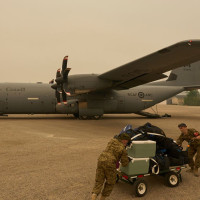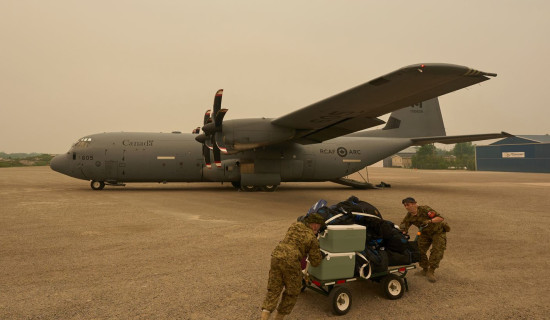- Thursday, 5 June 2025
Farmers complain about non-payment of milk
By Shaligram Nepal, Chitwan, June 3: Farmers of Chitwan have complained that the relevant bodies have not paid attention to make payments even though they are yet to receive Rs. 800 million from the dairy industry.
The government and private dairy industries have not paid for the milk collected from the farmers of Chitwan since last November.
Chairman of District Milk Producers Cooperative Association, Chitwan Kishor Bagale said that farmers have been forced to take loans to feed their livestock after not receiving milk money for six months.
He complained that the government bodies have not paid attention to them though they have suffered so much.
The government-owned Dairy Development Corporation (DDC) will have to pay Rs. 350 million for Chitwan district alone. The private dairy industry will have to pay Rs. 450 million, said President Bagale.
"Despite our efforts, the dairy industries and DDC are saying that they are unable to pay the dues due to lack of sales. But it has become difficult to meet the demand for milk in the market."
He said that if pressure is exerted to pay for milk, they have warned that they will not collect milk from the farmers. He said that if the farmers' money is not paid, the livestock farmers will be forced to go on strike.
The association said that around 151,000 litres of milk is being supplied from the district daily. Out of this, 35,000 litres of milk is being purchased by DDC. Currently, more than 300,000 litres of milk is being produced in the district daily.
Industry closed due to lack of milk
Meanwhile, Chitwan Milk Industry in Thimura, Chitwan has closed due to lack of milk.
The industry has been closed since April 23 after the industry did not receive milk for processing.
Manager of the Industry Durga Parajuli said that the industry was forced to close after it could not receive milk for processing.
"The demand for milk is high during the summer season and it is consumed in the market. So, the milk cannot reach the industry," he said.
He informed that the industry, which requires 40,000 litres of milk daily, is now receiving less than 5,000 litres of milk.
"The demand for yogurt has started increasing more than milk in the summer. The tendency of making yogurt reaching farmers' homes and markets has led to shortage of milk in the industry," he said.
However, he said that they have been holding discussions with various cooperatives and are preparing to start operations in a few weeks, he said.
Milk production up
Meanwhile, according to our Lamjung correspondent, milk production has increased in the district this year as compared to previous year. With the increase in milk production, the supply of milk outside the district has also increased, according to the Veterinary Hospital and Livestock Service Expert Centre, Lamjung.
While 1,200 litres of milk was being supplied daily in the early months of the current fiscal year, up to 2,500 litres of milk is being supplied by the end of the fiscal year, said Dr. Sunil Neupane, chief of Veterinary Hospital and Livestock Service Expert Centre, Lamjung.
There has been an increase in commercial milk production, especially in the areas under Rainas Municipality of the district, Dr. Neupane said.
Lamjung district has been seen as self-sufficient in milk production since previous fiscal years.
Last year, more than 16,000 tonnes of milk was produced in the district.
The milk produced is consumed internally and supplied to outside districts.
Dr. Neupane said that the supply of packaging milk in the district is higher than it’s brought. According to the Centre, most of the milk produced in the district is sold to local consumers.
Apart from this, milk produced in the district is sold after producing ghee. As there is no milk processing and packaging industry in the district, the milk that is not consumed here is supplied to outside districts.
Around 80 per cent of the milk produced in the district is from buffalo and the remaining 20 per cent is cow. Local consumers consume buffalo milk more, while cow milk is supplied to outside districts. Meanwhile, an animal health camp and interaction programme has been organised in Besishahar on the occasion of World Milk Day on Sunday.
Jayanta Mahat, a veterinarian at Besishahar Municipality, said that 115 cows and buffaloes belonging to 51 farmers were examined at the animal health camp and calcium was distributed to increase milk production.














